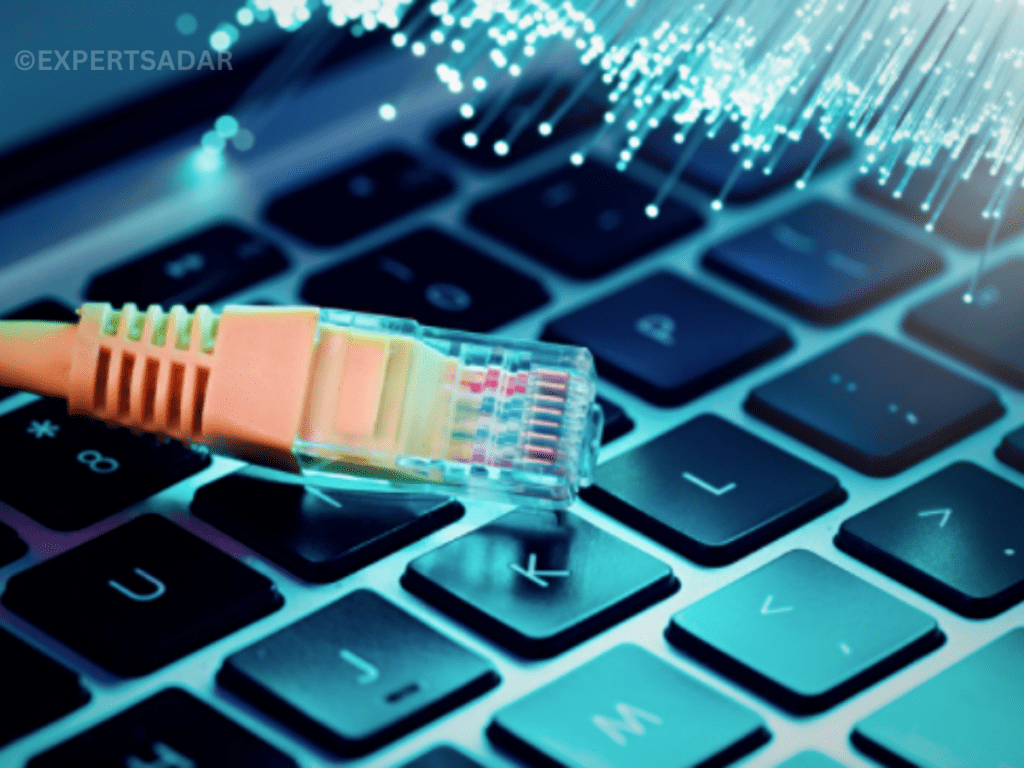The Internet is a global network comprising millions of computers and other electronic devices is known as the Internet. Thanks to the Internet, we can access all kinds of information, communicate with everyone in the world and do many other things.
What is the Internet?
The Internet is a global network that facilitates communication and information services through a collection of private, public, commercial, educational and public networks. Through the virtual infrastructure that links millions of computers and other electronic devices worldwide, people may communicate with each other directly and exchange information.
The Internet is decentralized, meaning there is no central authority to control its activities. The Internet uses protocols and standards to create, send, and receive small quantities of data in order to facilitate communication between devices. This explanation will help you understand how the Internet works and why it has become such an important part of life today.
What is a Network?
In the IT world, a network is defined as a collection of computers, hosts, servers, peripherals, and other devices connected for the purpose of exchanging and sharing information. The Internet, for example, is a large network of many smaller networks connected to each other.
The Types of Internets?
Here is a list of the main types of internet currently available:
1. Dialup Connection: If you’ve been using the online network for any length of time, you know what it’s like. Dial-up communication uses telephone lines, which are slow and inefficient. If you use America Online and have a dial-up modem that beeps, you’re already using dial-up! As you can imagine, the internet scene is old.
2. DSL: (Digital Subscriber Line). Although DSL uses a modem to connect to the Internet, it is ten times faster than the above.
3. ISDN: (Integrated Services Digital Network). ISDN modems are also used, but they are versatile and connect different devices such as computers, fax machines or telephones. You can talk video, voice and other information on the phone.
4. Cable modem: This allows you to connect your Internet modem to your cable TV provider.
5. Wireless: (WiFi). (Wi-Fi). Wi-Fi is the most popular form of online network connection today, connecting laptops, smartphones and other digital devices quickly and efficiently. Radio frequency is used by WiFi to transfer data.
6. Broadband: Broadband internet is very fast with speeds of up to 100Mbps, but the speed depends on the type of cable used (eg coax or fiber optic).
7. Mobile Phone Users: Mobile phones provide this type of internet to their customers. Mobile phone connections use 3G (3rd generation), 4G (4th generation) and 5G (5th generation) technologies. Note that 3G is being rolled out in phases.

How does the Internet work?
There are two basic ideas about how the Internet works: packets and protocols.
Packets
In a network, a packet is a small part of a larger message. Each package contains data and information about it. Information about the contents of the packet is called a “header” and is placed at the front of the packet so that the receiving machine knows what to do with the packet. To understand the purpose of package headings, consider how some consumer products come with packaging instructions.
When data is sent over the Internet, it is first broken into small packets and then converted into bits. Routers and switches, along with other network equipment, facilitate the routing of these packets to their intended destinations. Upon reaching their destination, the receiving device continuously assembles the packets to ensure that the data can be utilized or displayed.
Protocols
One of the primary issues that the people who created the Internet had to address was how to connect two machines that might be running different software and hardware. It involves the use of communication technology that allows all computers to communicate, just as two people growing up in different parts of the world need to speak the same language to understand each other.
This problem is solved by using standard protocols. In networking, a protocol is a standard way of performing certain tasks and structuring data so that two or more devices can communicate and understand each other.
A protocol exists for sending packets between devices in a network (Ethernet), and another for sending packets from network to network (IP), ensuring proper packet formatting. (TCP), and Data Formatting for Web Sites and Applications (HTTP). . . . . In addition to these basic protocols, there are protocols for routing, detection and encryption. There are alternatives to the above protocols for many types of content – for example, video streaming often uses UDP instead of TCP.
Uses of the Internet
Overall, people can utilize the Internet to communicate over both long and short distances, share information globally, and access quick answers to any query.
Here are a few particular instances of using the Internet:
- Social networking and content sharing;
- Email and other forms of communication such as online network Broadcasting (IRC), Internet telephony, instant messaging, and video conferencing.
- Online degree programs, courses, seminars, training and personal development.
- Job search. Employers and job seekers use the Internet to post jobs, apply for jobs, and find people on social networking sites like LinkedIn.
Here are some other examples:
- Online groups and forums
- Online dating
- The game is online
- Research
- Read newspapers and e-magazines
- Online shopping or e-commerce.
Blog By:- ExpertSadar



